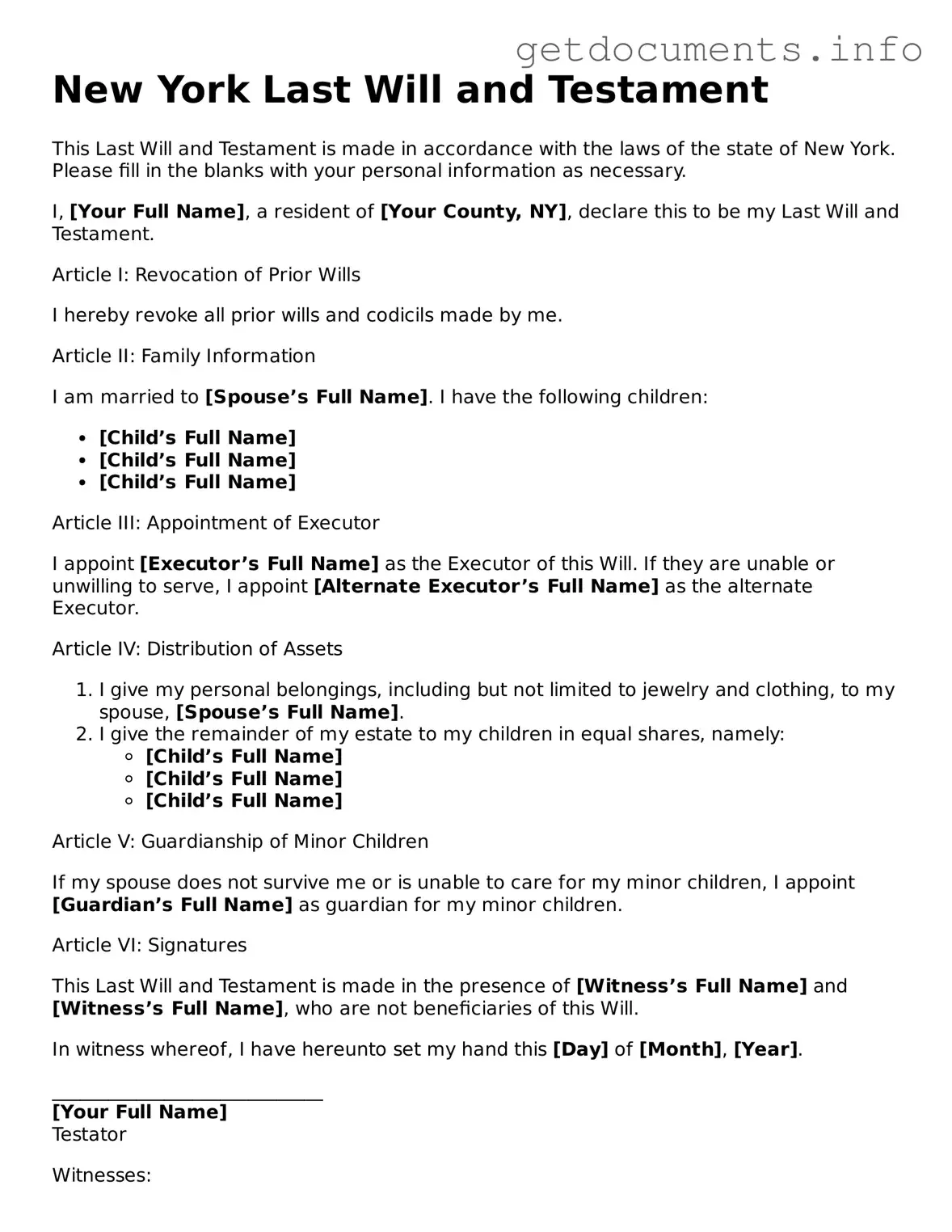Free Last Will and Testament Template for New York
A Last Will and Testament is a legal document that outlines how a person's assets and affairs should be managed after their death. In New York, this form serves as a crucial tool for individuals to express their final wishes and designate beneficiaries. Understanding this form is essential for ensuring that one's intentions are honored, so consider filling it out by clicking the button below.
Access Last Will and Testament Editor
